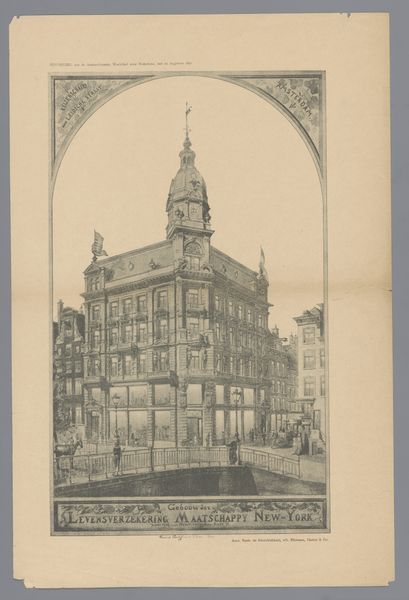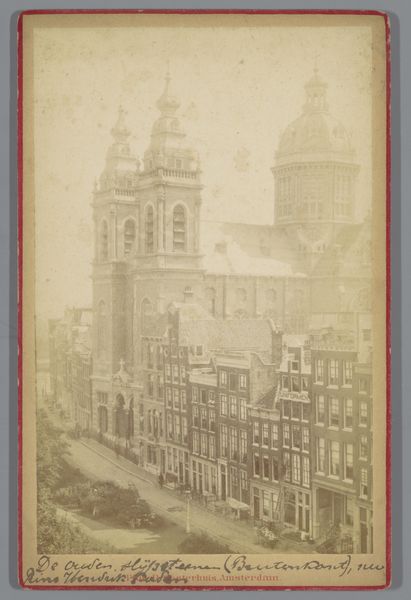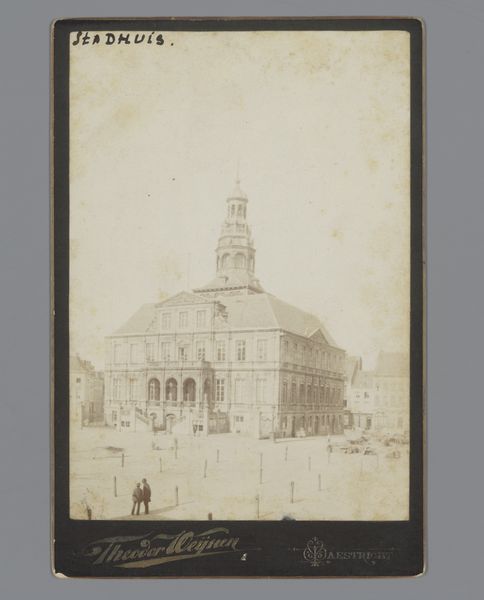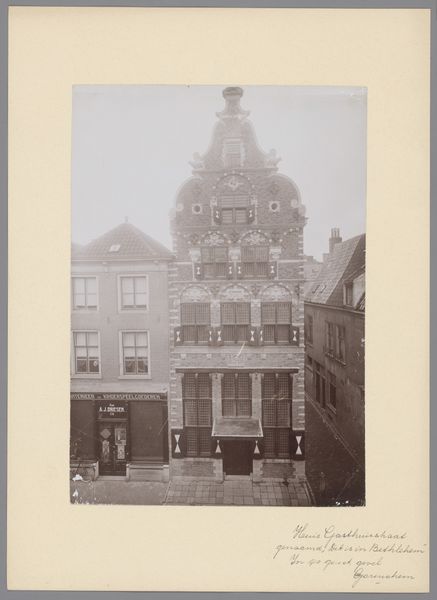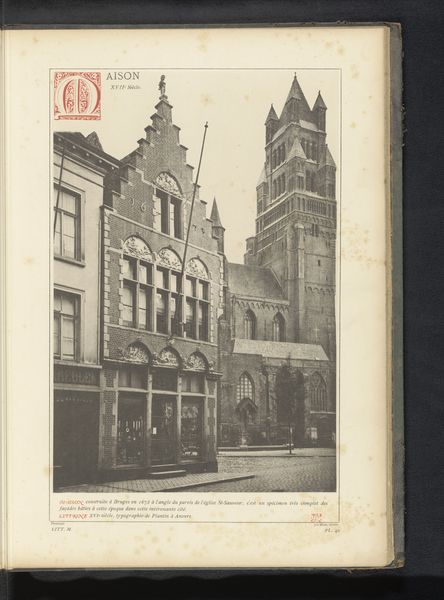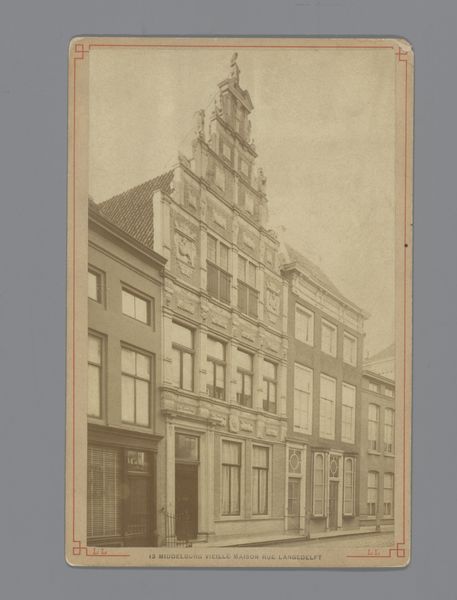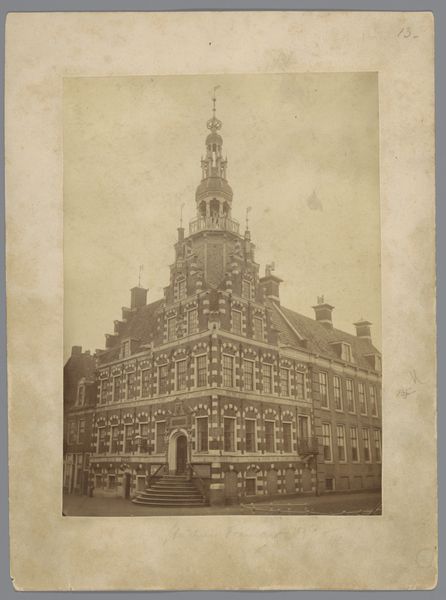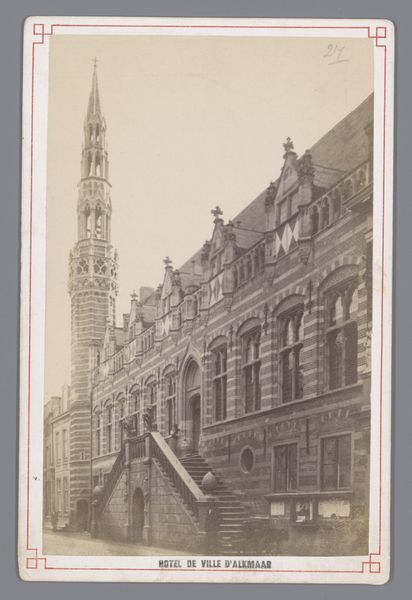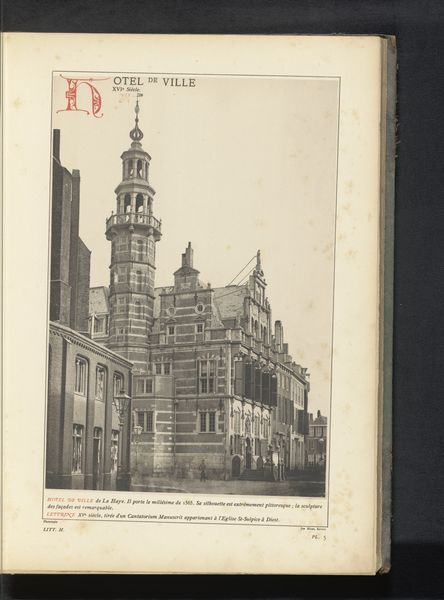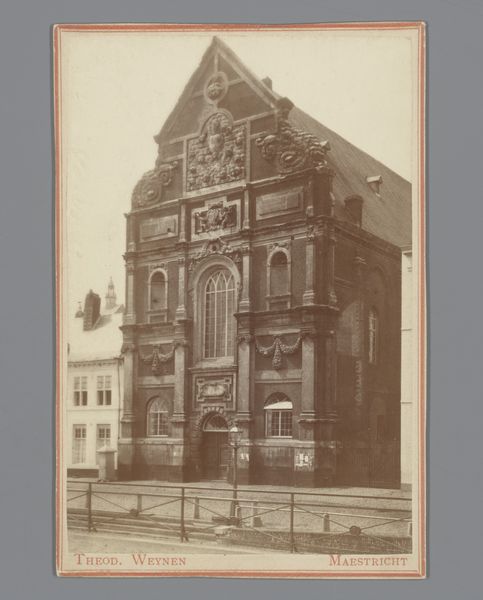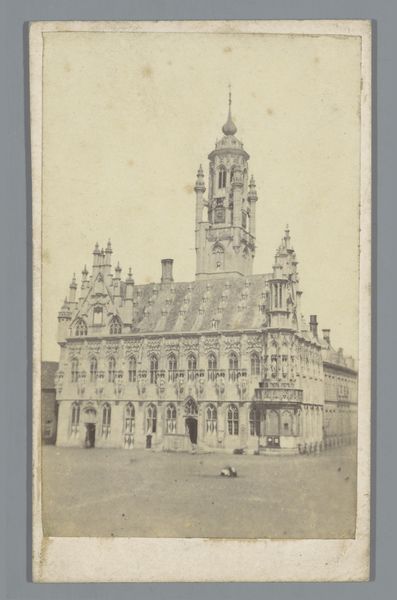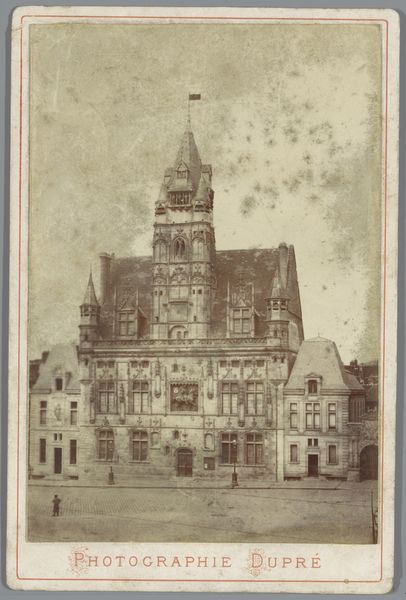
print, photography
#
dutch-golden-age
# print
#
photography
#
cityscape
Dimensions: height 144 mm, width 94 mm, height 166 mm, width 107 mm
Copyright: Rijks Museum: Open Domain
Editor: Here we have "Stadhuis te Bolsward, Friesland," a photograph, or print of a photograph, by Anne Molenaar, dating from somewhere between 1885 and 1905. The image is dominated by a magnificent building, likely a city hall given the title, rendered in sepia tones. What visual elements stand out to you in this piece? Curator: Immediately striking is the verticality. The photograph’s composition drives the eye upward, accentuating the building's height through the detailed clock tower. Note also the contrast between the strong geometric forms of the building itself and the softer tones of the sky. Molenaar’s use of light further articulates architectural details. Editor: So, you're focusing on the contrast and the formal structure? Curator: Precisely. Observe how the building's facade is organized into distinct horizontal layers and how the light is used to define edges and planes. Semiotically, the formal elements convey the authority the building represents through the composition. Editor: I see what you mean, it really commands attention because of its defined form, in relation to the light around it. Was there any attempt to capture an 'authentic' Dutch aesthetic, and do you see connections to art before the rise of Modernism? Curator: Dutch Golden Age art provides context. A deep-seated emphasis is always visible through details and light playing together in harmony; it’s visible in the construction of meaning, which invites contemplation upon architectural presence rather than pure imitation of it, like the modern architectural documentation. Editor: I never would have looked at it that way! Focusing on just the composition and materiality helps see the image anew. Curator: Indeed. By analyzing forms and light within the framework, we gain insights unavailable in a general review of architectural history alone. The dialogue between formalism and aesthetics makes the image both historically anchored and perpetually relevant.
Comments
No comments
Be the first to comment and join the conversation on the ultimate creative platform.
